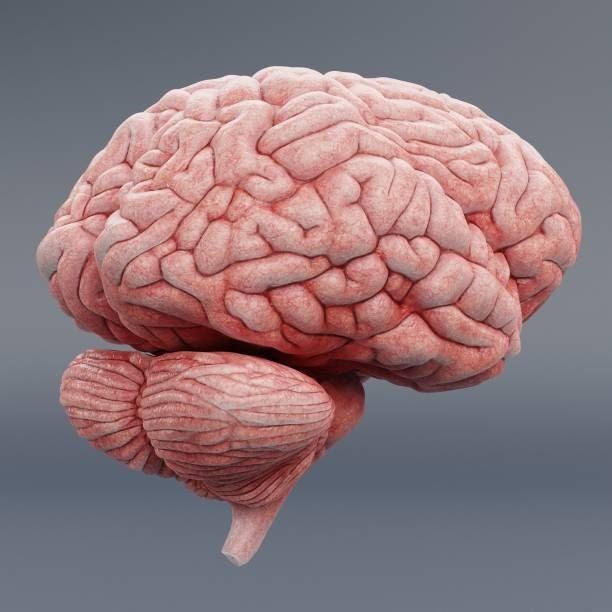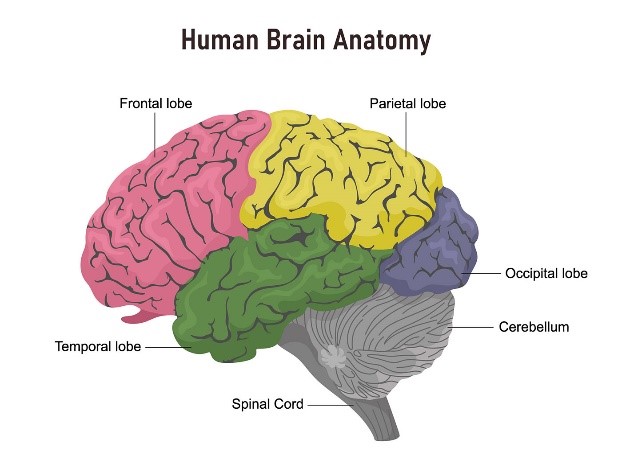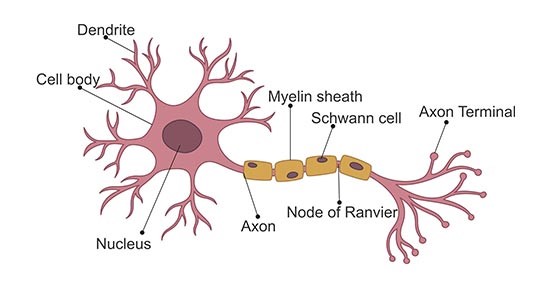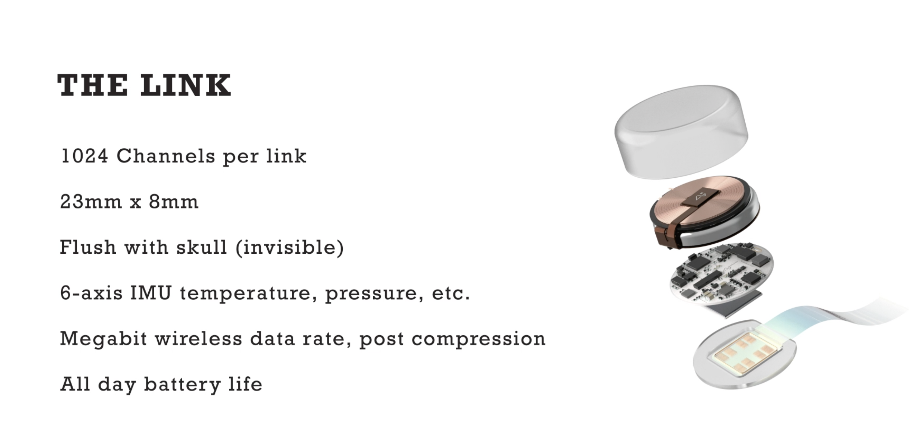Neuralink
Neuralink is a technology company which building a device “designed to connect human brains to computers or any other smart devices”.
“Neuralink represents a fascinating bridge between human mind and machines.”
“It is a glimpse into a future where our thoughts have real power into”
Let’s have some basic understanding about human brain, so that we understand the Neuralink device better.


All the activities are done under the control of Brain, it is situated inside the Skull and inside the Bony Cranium.
Brain is covered the layer called Meninges which is protect the Brain and provide the nutrients and oxygen to the brain tissues via capillaries. So, the human brain is made up of approximately 86 billion neurons. And neurons are just one of many different types of cells in your brain.
The basic function of a neuron is to send and receive information. Neurons come in many different types, but they generally have three parts in common: a dendrite which receives a signal, a cell body called a soma which computes the signal, and an axon which sends a signal out either to other neurons, or other specialised types of cells.
The signal that is received and sent through a neuron is electricity. All of our thoughts, feelings, emotions, and actions are computed from these electrical signals within your brain.
Neurons are connected to one another via something called a synapse. At one side of a synapse is an axon, and at the other is a dendrite. When an electrical signal is sent down an axon, it stimulates the axon to release chemicals referred to as neurotransmitters. This effectively converts the electrical energy from the axon into chemical energy. The neurotransmitters travel across the synapse and open channels in the dendrite which causes an influx of ions. This changes the potential across the membrane and converts the chemical energy back into electrical energy within the dendrite.


If a neuron receives a strong enough signal from its dendrites, then it fires something called an action potential, therefore passing the signal on further to the next neuron. An action potential is known as an all or nothing response. So, if the stimulus does not produce a large enough response, then an action potential will not be fired, and the signal will stop there. However, if the stimulation threshold is crossed then an action potential will be fired, therefore propagating the signal further.
Okay now step into the Neuralink!!!
neurotech company developing non-invasive, brain-computer interfaces in the form of headphones. “[Neuralink’s technology] is capable of recording and decoding neural signals and then transmitting information back to the brain using electrical stimulation.”
The implant itself is called “the Link.” This coin-sized brain chip is surgically embedded under the skull, where it receives information from neural threads that fan out into different sections of a subject’s brain in control of motor skills. Each wire contains sensors capable of recording and emitting electrical currents that are “so fine that they can’t be inserted by the human hand,” according to Neuralink’s website. That’s why Neuralink has built a neurosurgical robot that’s designed to become fully automated.
How Does Neuralink Work?
Neuralink’s underlying technology works in the same way as electrophysiology, Norman explained.
The electrical chemical signals in our nervous system spark as neurons communicate with one another across gaps between nerve cells known as synapses. This brain activity is captured by electrodes, or sensors that detect voltages, measuring the change in “spikes” of when these voltages fire (or potentially fire).
In other words, our brain activity data is captured not only when we take action, but also if we think about taking action. That’s not to say the brain-computer interfacing that Neuralink does is on the same level as mind reading.
As these devices record complex data sets, machine learning algorithms and other artificial intelligence agents are then employed to make sense of the information.
A brain-machine interface is just a way of us being able to understand the brains signals, and then convert this into something that we can use manipulate our surroundings, such as a mobile phone or computer. In theory, the same interface could also be used to feed signals to the brain as well. Effectively augmenting our brains capabilities. Now there is a lot of examples of this functionality in science fiction, but is this something we could realistically do. Well, the answer is, yes, absolutely, but it won’t be easy.
How Neuralink Differs
So, it’s important to note that Neuralink’s BMI is not the first interface ever to be made. Neuralink’s technology builds on decades of BMI research in academic labs, including several ongoing studies with human participants.
There are currently only a few approved devices for recording or stimulating from the human brain, including devices for deep brain stimulation (DBS), which can treat neurological disorders such as Parkinson’s Disease, and devices for the detection and disruption of seizures.
These are designed to modulate the activity of whole-brain areas, rather than transferring information to and from the brain. Therefore, they only have a small number of electrodes (less than 10) and are much larger than the threads in the Neuralink device. For example, DBS leads have only 4–8 electrodes and are about 800 times larger than the Link device.
There are other devices being used in clinical trials for BMI movement control or sensory restoration. However, none of these devices has more than a few hundred electrodes, and they are all either placed on the surface of the brain or in fixed arrays of single rigid electrodes. The Link is being designed with an order of magnitude more electrodes and with flexible threads that are individually placed to avoid blood vessels and to best cover the brain region of interest.
Where to place the Neuralink?
if we place electrodes next to these axons, we’re able to detect when an action potential is fired, and this is what Neuralink is taking advantage of.
Now we are a long way away from creating a brain-machine interface for the whole brain. So rather than creating an interface for the whole brain, Neuralink are focussing on specific areas.
Particular areas of the brain are associated with different tasks. So, for example, our occipital lobe is associated with visual processing, whereas our frontal cortex is associated with higher cognitive functions such as memory, emotions, and impulse control.
How it is discovered?
There is an interesting story about how we first discovered this, about a man called Phineas Gage.
Phineas Gage was a foreman of a crew working on the railroad in Cavendish, Vermont in 1848, when tragedy struck. As he was using a tamping iron to pack explosive powder into a hole, the powder detonated. The tamping iron shot skyward, penetrated Gage’s left cheek, ripped into his brain and exited through his skull, and then landing several dozen feet away.
So, this will trigger to place the Neuralink in one part of the brain then became technological advancement in the BCI.
The Neuralink Device

The threads are inserted into areas of the brain that control movement, i.e., the primary motor cortex. Each thread contains many electrodes which detect the electrical impulses within the axons of neurons and relay these back to the Link transmitter.
The device is placed entirely inside the head, so no part is exposed to charge it. The device is therefore charged using an inductive charger, allowing it to be charged from outside the body like modern smartphones are.
The threads themselves are so fine and need to be placed with such accuracy, that they can’t be placed by the human hand, even by the steady hand of a neurosurgeon. So, the team at Neuralink are making a robot, based on a prototype initially developed at the University of California, to allow for the accurate and efficient insertion of the microfibers.
A chip within the implant deciphers this complex electrical language into a digital code that a computer can understand. Think of it like cracking a secret code - specific patterns of neuron firing might correspond to specific actions, like wanting to move your arm or open an app.
This is where the magic happens. The decoded signals are sent wirelessly, allowing you to control external devices just by thinking about it. Imagine want to check your email. By focusing your thoughts on that action, the Neuralink system translates those thoughts into a signal that opens your email app.
“The key to making this mind-machine connection work smoothly is machine learning. The system is constantly learning and adapting to your unique brain fingerprint. The more you use the BCI, the better it gets at understanding your specific way of thinking, making the experience more intuitive.”
implanted into a Pig called Gertrude, was showcased at a Neuralink event given by Elon Musk.
Neuralink announced on May 25, 2023, that it received U.S. Food and Drug Administration clearance for an in-human clinical trial. The company began recruiting for the trial in September of 2023 and continues to provide PRIME study progress updates on its blog page
Is Neuralink Being Used on Humans?
A human patient, 29-year-old Noland Arbaugh, received the first Neuralink implant on January 28, 2024. Second human patient named Alex also received the Neuralink implant, this time without any threads retracting. He has used Neuralink to play the first-person shooter game Counter-Strike 2, being able to simultaneously control a mouse and keyboard to perform more seamless gameplay.
What are the risks of implant?
Physical and Biological Risks
· Surgical Complications: infection, bleeding, swelling, or damage to brain tissue.
· Scar Tissue Formation: The brain's natural response to a foreign object is to form scar tissue around it.
· Infection: Bacterial or viral infection during or after surgery, which can lead to severe complications.
· Device Failure: The implant may malfunction or degrade, additional surgeries for removal or replacement.
· Inflammation and Immune Response: The body may recognize the implant as foreign and trigger an immune response, causing inflammation that can damage brain tissue.
Long-Term Safety Concerns
· Material Degradation: Over time, the materials used in the implant might degrade inside the brain, leading to potential toxicity or malfunction.
· Electrical Interference: The implant could potentially interfere with normal brain functions or external electrical fields (e.g., MRI scans, electromagnetic fields).
· Brain Damage Over Time: Continuous stimulation or data extraction could damage brain cells or disrupt normal brain activity.
Psychological and Cognitive Risks
· Mental Health Effects: Changes in brain function or unintended side effects could lead to mood disorders, anxiety, depression, or personality changes.
· Cognitive Overload: Direct brain-computer connections could overwhelm the brain with information, causing confusion or cognitive fatigue.
· Identity and Self-Perception: The integration of technology with the brain might lead to existential concerns about identity and what it means to be human.
Privacy and Security Risks
· Hacking and Data Breaches: A compromised Neuralink device could expose personal thoughts or brain data to unauthorized individuals, posing severe privacy threats.
· Data Exploitation: Brain data could be misused by companies, governments, or malicious actors, leading to unethical surveillance or manipulation.
 Neuralink
Neuralink  Cyber Security
Cyber Security  Ngrok
Ngrok  Exploring AWS IoT Device Shadow
Exploring AWS IoT Device Shadow